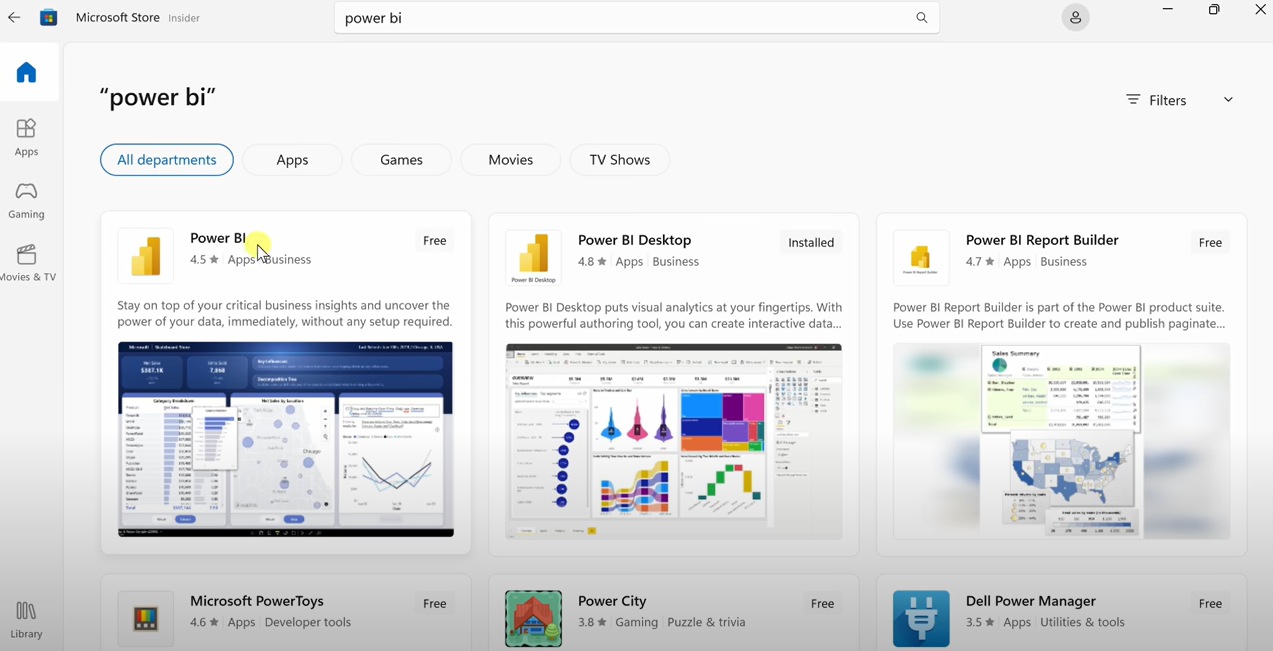The Ultimate Guide to a Power BI Career: Unlocking Opportunities in Data Visualization
If you’re in the realm of data analytics and business intelligence, you’ve undoubtedly heard about the significance of a Power BI career. Microsoft’s Power BI, a leading tool in business analytics and visualization, is setting professionals on a promising career trajectory. In this Projectcubicle’s guide, we’ll explore everything you need to know about pursuing a Power BI career.
Table of Contents

Power BI Career starts with a small step!
What is Power BI?
Power BI is a powerful analytics toolset by Microsoft that transforms raw data into visually compelling and interactive business insights. From Power BI Desktop to Power BI Service and Power BI Mobile, this suite is revolutionizing data-driven decision-making.
Why a Power BI Career is Worth Pursuing
- Seamless Integration: Power BI’s impeccable integration with Microsoft’s ecosystem, such as Azure, Excel, and SQL server, makes it a top choice in the industry.
- User-Centric Design: For those considering a Power BI career, its user-friendly interface ensures that creating compelling reports is a breeze, even for non-tech professionals.
- Endless Customization: With Power BI, customization knows no bounds—be it through tailor-made visuals or integration with R and Python scripts.
Exploring Power BI Career Opportunities:
- Power BI Developer: At the heart of a Power BI career, developers specialize in designing and creating BI reports and dashboards.
- Data Analyst: With Power BI as their go-to tool, data analysts delve deep into data modeling, transformation, and crafting visual stories.
- BI Consultant: These experts focus on guiding businesses to harness the full potential of Power BI, ensuring seamless setup and optimal use.
- Power BI Trainer: As the demand for Power BI expertise surges, trainers are stepping up to impart crucial skills, both offline and online.
Essential Skills for Climbing the Power BI Career Ladder:
- Data Modeling: Grasping the nuances of database structures and data warehousing is foundational.
- DAX Mastery: The heart of Power BI lies in Data Analysis Expressions (DAX)—a formula language tailored for Power BI and its counterparts.
- SQL Proficiency: While Power BI supports diverse data sources, a strong command over SQL can be a game-changer.
- Art of Visualization: Power BI isn’t just about tools; it’s about shaping data into meaningful stories.
- Soft Skills: Effective communication and teamwork are the unsung heroes in a Power BI career, especially when collaborating with clients or larger data teams.
Overcoming Challenges in a Power BI Career:
- Staying Updated: The dynamic nature of Power BI means frequent updates, necessitating continuous learning.
- Mastering Advanced Features: Delving into intricate functionalities, especially advanced DAX, can be a steep curve.
- Legacy System Integration: Marrying Power BI with older business systems can often be a meticulous task.
How to Learn Power BI?
With data being hailed as modern-day gold, the horizon for a Power BI career looks radiant. Microsoft’s emphasis on making Power BI a business staple ensures that professionals in this field will always be in demand. The era of real-time data analytics and cloud integrations is here, and Power BI is at its forefront.
Understanding the Foundations
Initially, before diving deep, it’s essential to comprehend the basics of Power BI. Power BI, at its core, is a tool for data visualization and business intelligence. By recognizing its primary components – Power BI Desktop, Power BI Service (online), and Power BI Mobile – you’ll be better poised to navigate its functionalities.
Setting Up Your Workspace
Subsequently, after gaining a foundational understanding, you should embark on the practical journey. Start by visiting the official Microsoft website, from which you can download and set up the Power BI Desktop on your computer.
Familiarizing and Experimenting
Once installed, take the time to explore Power BI Desktop. Notice the distinct ribbons, delve into its primary views, and familiarize yourself with the interface. Additionally, to bolster your hands-on skills, import sample datasets and play around with creating various visualizations.
Structured Learning Paths
Now, while experimenting provides insights, structured learning offers depth. Also, Microsoft’s official tutorials are an excellent place to commence. Moreover, platforms like Coursera and Udemy provide comprehensive courses, enriching your learning with real-world examples.
Diving Deeper into Advanced Aspects
With the basics in hand, it’s time to transition to more intricate aspects of Power BI. Firstly, try to grasp the essence of DAX for creating custom measures. Secondly, explore the powerful Query Editor, and finally, dive into creating custom visuals and themes.
Engaging with a Wider Audience
Furthermore, remember that learning isn’t just an individual journey. Also, the Power BI community is expansive and incredibly active. By participating in forums, reading expert articles, and attending relevant webinars, you can gain diverse perspectives and solutions.
Applying Skills in Real-World Scenarios
As you progress, it’s imperative to test your skills in real-world contexts. Also, thus, whether it’s a work project or a personal endeavor, employing Power BI practically will solidify your understanding.
Staying Ahead of the Curve
Importantly, in the ever-evolving realm of technology, staying updated is crucial. Also, consequently, monitor the Power BI Blog and Microsoft’s announcements, ensuring you’re always equipped with the latest knowledge.
Certification: The Icing on the Cake
Lastly, after dedicating time and effort, consider certifying your expertise. Also, undertaking Microsoft’s Power BI certification not only validates your skills but also significantly boosts your professional credibility.
Power BI Career: Frequently Asked Questions (FAQs)
1. What is Power BI?
Power BI is a data visualization and business analytics tool developed by Microsoft. Also, it allows users to connect to a wide variety of data sources, transform that data into a usable format, and then visualize it in interactive reports and dashboards.
2. Why is a career in Power BI becoming popular?
With the increasing importance of data-driven decision-making in businesses, tools like Power BI that help visualize and make sense of large datasets are in high demand. A career in Power BI means being at the forefront of business intelligence and analytics.
3. What job roles are available for Power BI professionals?
Common roles include Power BI Developer, Data Analyst, BI Consultant, and Power BI Trainer, among others.
4. Do I need a background in IT or Data Science to pursue a Power BI career?
While a background in IT or data-related fields can be beneficial, Power BI’s user-friendly interface makes it accessible even for those who don’t have a deep technical background. However, mastering its advanced features might require additional learning.
5. What skills are essential for a Power BI career?
Key skills include data modeling, understanding of DAX (Data Analysis Expressions), proficiency in SQL, and a strong sense of data visualization. Also, soft skills like effective communication are also valuable.
In conclusion, transitioning smoothly into mastering Power BI requires a blend of structured learning, hands-on practice, and community engagement. By following the steps outlined, you’ll be on a steadfast path to becoming a Power BI expert.
Hello, I’m Cansu, a professional dedicated to creating Excel tutorials, specifically catering to the needs of B2B professionals. With a passion for data analysis and a deep understanding of Microsoft Excel, I have built a reputation for providing comprehensive and user-friendly tutorials that empower businesses to harness the full potential of this powerful software.
I have always been fascinated by the intricate world of numbers and the ability of Excel to transform raw data into meaningful insights. Throughout my career, I have honed my data manipulation, visualization, and automation skills, enabling me to streamline complex processes and drive efficiency in various industries.
As a B2B specialist, I recognize the unique challenges that professionals face when managing and analyzing large volumes of data. With this understanding, I create tutorials tailored to businesses’ specific needs, offering practical solutions to enhance productivity, improve decision-making, and optimize workflows.
My tutorials cover various topics, including advanced formulas and functions, data modeling, pivot tables, macros, and data visualization techniques. I strive to explain complex concepts in a clear and accessible manner, ensuring that even those with limited Excel experience can grasp the concepts and apply them effectively in their work.
In addition to my tutorial work, I actively engage with the Excel community through workshops, webinars, and online forums. I believe in the power of knowledge sharing and collaborative learning, and I am committed to helping professionals unlock their full potential by mastering Excel.
With a strong track record of success and a growing community of satisfied learners, I continue to expand my repertoire of Excel tutorials, keeping up with the latest advancements and features in the software. I aim to empower businesses with the skills and tools they need to thrive in today’s data-driven world.
Suppose you are a B2B professional looking to enhance your Excel skills or a business seeking to improve data management practices. In that case, I invite you to join me on this journey of exploration and mastery. Let’s unlock the true potential of Excel together!
https://www.linkedin.com/in/cansuaydinim/










